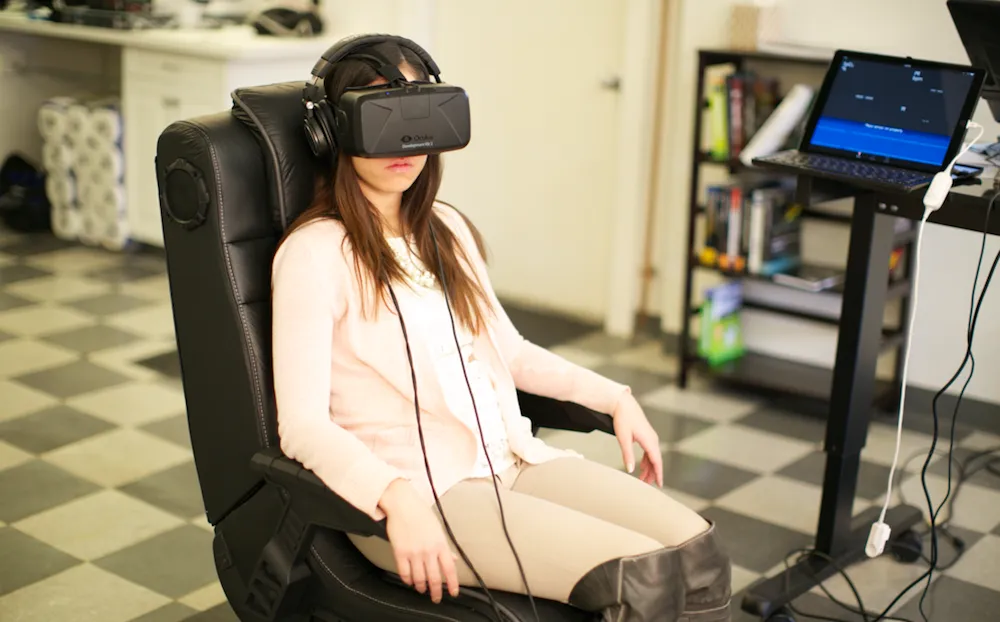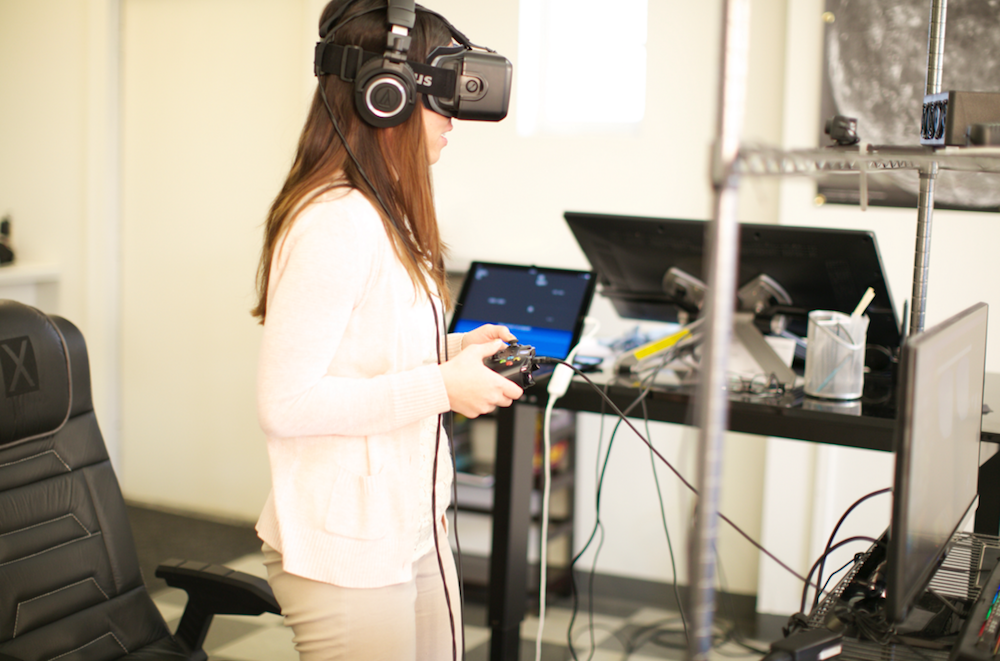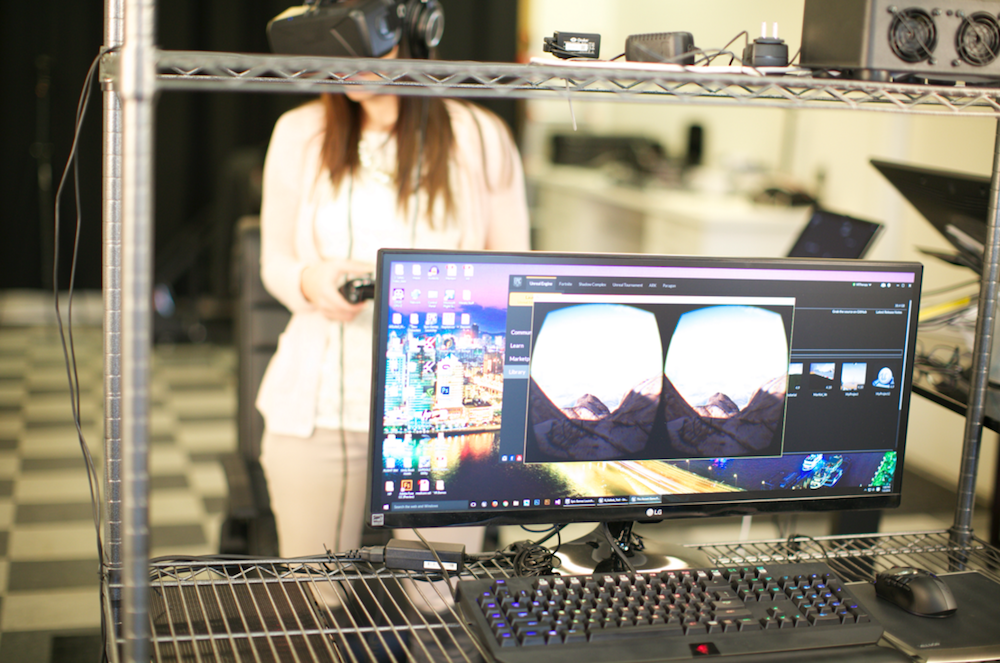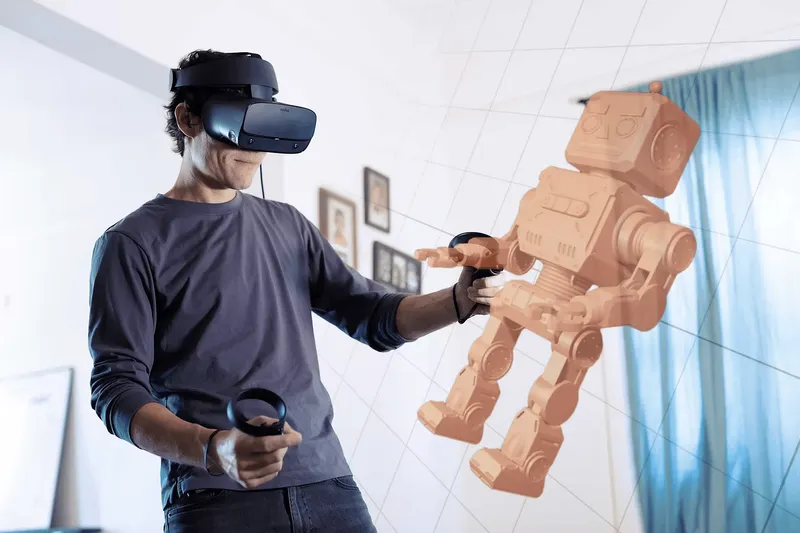Thomas Overly, a therapist and psychologist working at VR Therapy in Grand Rapids, Michigan, is experimenting with new treatment methods for patients that suffer from phobias and post-traumatic stress disorders. With the help of an Oculus DK 2, some pretty beefy PCs, and Unreal Engine 4, he is able to create tailor-made VR experiences that bring his patients face to face with their worst fears.
“When someone has a traumatic experience it creates a cocktail of neurological chemicals that lead to a strong anxiety reaction,” Overly told UploadVR over the phone. “This cocktail can be reintroduced when the patient stumbles upon certain triggers.”
Overly’s goal is to help his patients face those triggers head on in the virtual world so they know how to react when they occur in the real world.
VR therapy is becoming more common. The San Francisco Examiner reported in December that two Santa Clara students are attempting to use VR to treat acrophobia (the fear of heights) in their dorm room. The nearby USC Institute for Creative Technologies also introduced a VR exposure therapy designed to treat post-traumatic stress. A London company known as Virtual Exposure Therapy uses VR to treat phobias in a very similar manner to Overly’s practice in Michigan.
“Our first step is almost a month long. I interview the patient to determine exactly what they need and then walk them through basic coping methods including breathing exercises, visualization and others,” Overly said. “Once we’re sure they have methods to handle the fear our programmers build them a custom VR experience using Unreal 4 and I place them into the stressful environment.”
Overly gave an example of a man who had a crippling fear of public speaking, but wanted to overcome it so he could make a successful speech to his company’s board of directors.
“We were actually able to build a fully immersive board room populated with cold-looking execs. I could then trigger each one to fall asleep, take phone calls, mutter to one another, or interrupt the patient as he tried to get through his speech,” Overly said.
Other experiences are far more unsettling.
“One woman was molested by a man who would lock her in a darkened room, so she would be triggered by the sound of a deadbolt or lock,” Overly said. “It was tough, but we built her a similar darkened room with a man’s silhouette that would lock her in.”
Overly says that, on average, his patients undergo six to eight hour-long sessions in these VR immersion tanks. For his next project he is introducing what he calls a behavioral rehearsal system.
This system allows Overly to enter into his patient’s VR therapy experiences himself and take on the roles of people they are hoping to interact with more successfully. It uses a FaceWear GoPro Headcam Kit that enables him to realistically project his facial movements onto the avatar in the experience with which the patient should be working.
“This system is especially useful for children,” Overly said. “If they are having trouble working with a teacher or another child in their class I can actually become that person to them. This leads to a much more powerful session than me just sitting across from them on a couch.”
The rehearsal system also uses Scent Events products that allow Overly’s patients the chance to confront what can be some of the most common triggers for repressed anxiety: smells.
“One woman would panic every time she smelled a bonfire,” Overly said. “So we used this system to make it smell like a bonfire while she interacted with virtual fires inside the Oculus experience.”
“VR enables the impossible,” Overly said. “It has the potential to solve problems that were not solvable before.”






























